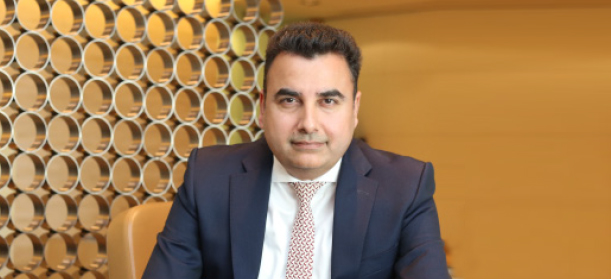Rajesh Pareek has a lot on his hands. As the CFO of Dubai International Financial Centre Authority, he demands accurate, real-time reporting information. He opted for a fresh solution earlier this year that could eliminate errors and ensure faster decision-making. 
As the largest organisation of its kind in the Middle East and North Africa, Dubai International Financial Centre finds itself in a formidable position. Ranked 6th out of 53 financial centres globally, it holds an advantageous strategic location – between the major international capital markets of New York and London to the West, and Singapore, Hong Kong and Tokyo to the East – and is only gathering steam.
 Established by the Government of Dubai in 2004, DIFC is the emirate’s financial free zone, and was established to promote the development of financial services in the UAE, serving to diversify the country’s economy. As of 2011, it contributes an impressive an impressive 4 percent of Dubai’s gross domestic product.
Established by the Government of Dubai in 2004, DIFC is the emirate’s financial free zone, and was established to promote the development of financial services in the UAE, serving to diversify the country’s economy. As of 2011, it contributes an impressive an impressive 4 percent of Dubai’s gross domestic product.
Sitting in 110 acres, DIFC had a working population of 16,560 and 1,113 registered companies as of June last year, including 17 of the 20 leading global banks and 8 of the 20 leading insurance firms.
At the heart of the DIFC model is an independent risk-based regulator, the Dubai Financial Services Authority (DFSA), which grants licences and regulates the activities of all banking and financial institutions in DIFC. The regulatory body was created using principle-based primary legislation modelled closely on that used in London and New York. The Authority permits 100 percent foreign ownership and makes no restrictions on foreign exchange or profit repatriation.
For Rajesh Pareek, DIFC Authority’s Chief Financial Officer, accurate, real-time data is a requisite of success in his job, with quick decisions a must. The organisation’s finance team, is, in short, pivotal in the overall decision-making process. “DIFC’s vision is to be a global financial hub capitalising on a range of its strengths,” Pareek says. “We have a fantastic strategic location, an effective and independent regulatory and legal framework, a tax-friendly regime and first-class supportive infrastructure.”
Pareek is clear on his division’s duties to DIFC. “Our department aims to deliver service excellence by creating an efficient and seamless platform to support the business,” he says. “This means providing relevant and dynamic business information, and to integrate finance operational processes with all stakeholders in a manner that maximises efficiency while maintaining proper control.”
In Pareek’s role, time waits for no man. “In the fast-paced business world, organisations have to make split second decisions in certain situations which could have a substantial impact on its financial performance,” Pareek says. “As such, turning information around at a fast pace is critical. You need to have data available at the flick of a hand.” As well as satisfying this goal, Pareek also identified two main drivers in opting for a change in the organisation’s processes. “We always faced a risk of human error in our financial reporting,” he says. “There were cases where people made mistakes, which is normal. In addition, the process was time consuming.”
Pareek was keen for his team to be autonomous and contemporary in their drive for fast action. “To make relevant and well-informed decisions, instant access to and availability of data was a must,” he says. “This becomes paramount when operating in an environment of Big Data and multi-jurisdictional operation. Customised reports need to be instantly generated from the system with limited or no intervention of IT.”
Along with the support of his team, Pareek sought an online analytical application (OLAP) tool, which could be versatile, user-friendly and, most importantly, customisable on-the-go, with limited or no intervention from IT except in the installation process. The OLAP would also have to work seamlessly with the organisation’s backbone SAP ERP system
By late 2014, Pareek had decided that GL Wand from Excel4apps , an SAP financial reporting solution, would be the best fit for DIFC. Such was their level of confidence in the solutions presented by Excel4apps and the supporting information provided, that DIFC made the purchase decision without requiring the 30-day free trial, initially purchasing six GL Wand licences and two Reports Wand licences. He says the process of introducing the technology was relatively painless, his only real challenge convincing the IT department that Excel4apps was exactly what the finance department needed. “Procurement was an initial hurdle, but one that was easily passed,” he says. “Our management team was quick to realise its benefit against the cost, and gave us the green light very promptly.”
A month after beginning the project, DIFC had completed all tests on Excel4apps and had the technology in full operation. The implementation has had a vast effect on the day-to-day operations of DIFC, facilitating a number of processes. “It’s been a blessing,” Pareek says. “The procurement process was well worth going through.” He says it has provided a level of automation not seen before at DIFC. “Excel4apps reduces the manual elements of reporting,” he says. “We can now pull and prepare data in a matter of hours, not days.”
In addition to the quality of the technology itself, Pareek has also found it extremely easy to integrate into the daily routines of his staff. “Once they all got the hang of it – which didn’t take long – it has started to work wonders,” he says. “It’s been very compatible with our other software and, to be honest, our staff love working on it.”
Pareek points to one gain in particular that has proven to be the most eye-catching in the Excel4apps adoption. “The biggest tangible benefit has the time saved in reporting monthly financials, and has dramatically reduced closing time. Man hours are the organisation’s highest expenditure. We have a small team, and the best way to impact their role is to reduce the time they spend on tasks that can be done through technology.
“As for its intangible benefits, having the support and satisfaction of top management on the quality of analytics produced, in the shortest turnaround time, has been fantastic.”












